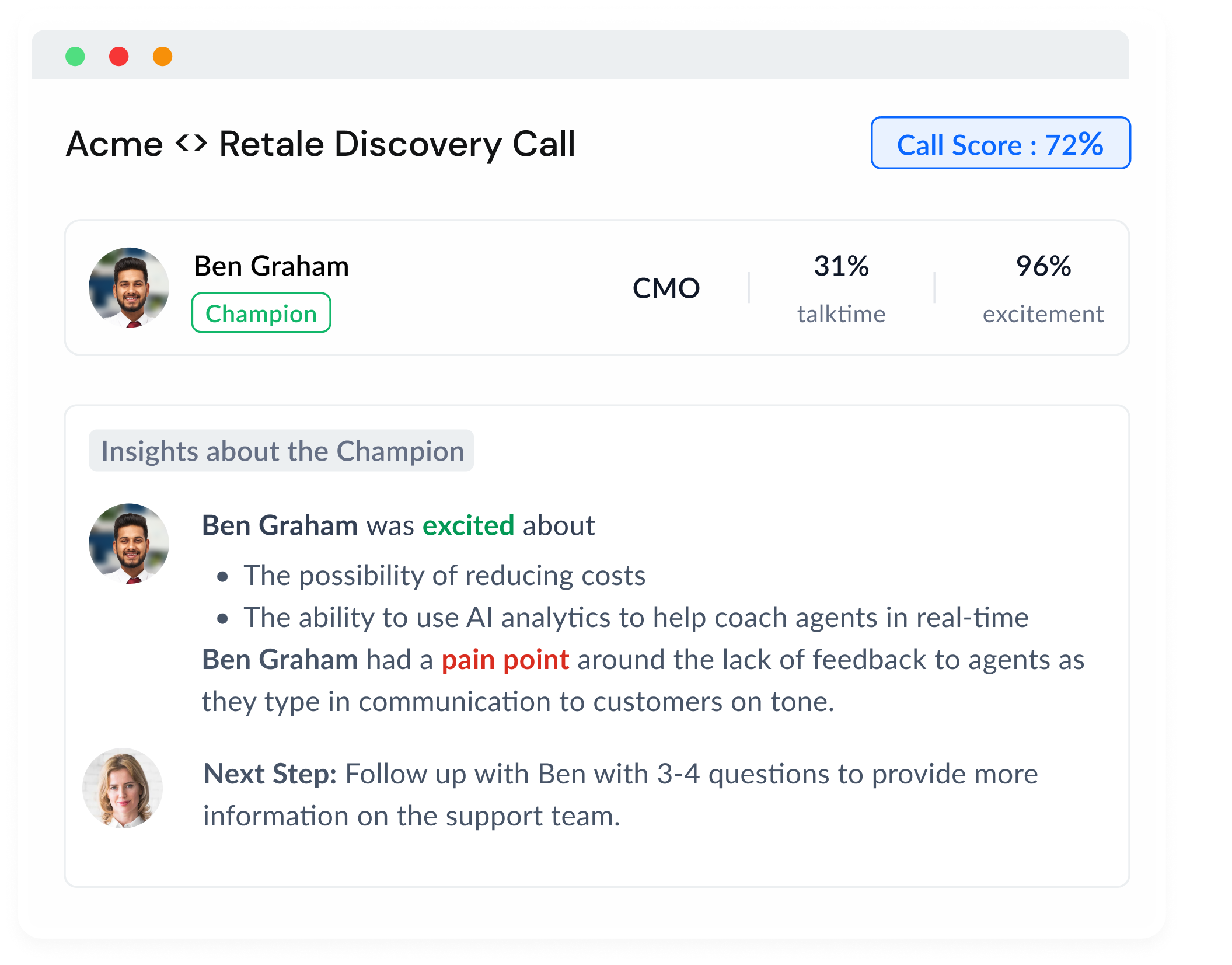Imagine you're in a poker game, a high-stakes Texas Hold'em showdown. The room is smoky, the tension palpable. You're not just playing against the house. No, sir, you're playing against seasoned sharks looking to take you down. You're eyeing your cards, contemplating your next move. That's what it feels like when you're a SaaS salesperson competing in a sales opportunity. You're not just selling. You're playing a game of strategy, cunning, and bravado.
Yet, this isn't just about bluffing your way to victory. It's about mastering the art and science of beating the competition and emerging as the undisputed champion. It's about understanding your prospect's mindset, positioning your product/service in the best light, and guiding your prospect to make the right decision. In the end, it's not about the hand you're dealt, but how you play your cards.
Understanding Your Prospect's Worldview
Winning in sales is a lot like being a good detective. You're not merely selling a product or service; you're solving a mystery. Your prospect is your key witness, and your job is to unveil their deepest desires, fears, and considerations.
To do this, you need to dive deep into your prospect's mind. You need to understand their worldview, their perceptions about your product or service's category, and most importantly, what other brands they have heard of or are actively evaluating. This is the discovery process, and it's the foundation of any successful sales strategy.
Think of discovery as your Sherlock Holmes moment. You're not just asking questions; you're analyzing responses, reading between the lines, and piecing together the puzzle. "So, you mentioned you're also considering Brand X. Can you tell me what attracted you to them?" Or, "What features are you looking for in a product like ours?" These questions aren't just about gathering information. They're about showing your prospect that you genuinely care about their needs and are here to help them find the best solution, even if that solution isn't your product.
Remember, in the world of SaaS, you're not just selling software. You're selling a dream, a promise of a better future. And to do that effectively, you need to step into your prospect's shoes, see the world from their perspective, and align your product or service with their vision. Only then can you play your hand right and win the game.
Next, we'll dive into how to position your product or service without coming off as too sales-y. But remember, this isn't about forcing a square peg into a round hole. It's about finding the perfect fit between your prospect's needs and your offering. It's about shaping their dream into a reality, and sometimes, that means playing the long game. Buckle up, because this is where the fun begins.
Positioning Your Product/Service Without Being Sales-y
Alright, let's roll up our sleeves and dive right in. Now, you might be thinking, "How on earth do I sell without selling?" It's like trying to swim without getting wet, right? Well, not quite. The secret lies in positioning.
Imagine you're at a party. You're casually mingling, having a good time, and then you spot someone you'd like to impress. Do you walk up to them and say, "Hi, I'm the most amazing person you'll ever meet"? Probably not (unless you're James Bond). Instead, you'd subtly highlight your qualities through conversation. That's what positioning is all about.
As a savvy SaaS seller, you want to position your product as the desirable choice. You want to help your prospect understand the benefits without sounding like a used car salesperson. So, how do you do that? Here's a hint: think of yourself as a consultant rather than a salesperson.
A consultant provides valuable advice, listens to their client's needs, and proposes solutions. They don't just push their product but tailor their approach based on what's best for the client. That's exactly what you need to do. Don't just talk about your product's features; talk about how it can solve their problems, fulfill their needs, and make their life easier.
Guiding the Prospect in the Right Direction
Congratulations! You've understood your prospect's worldview, you've positioned your product perfectly without sounding sales-y, and now you're ready for the final play. This is where you don your expert consultant hat and guide your prospect in the right direction.
But wait, "direction" here doesn't mean directing them straight to your product. Nope, that's a rookie mistake. Instead, it's about guiding them towards making the best decision for themselves. Remember, as a consultant, your role is to provide expert advice, not hard-sell.
This is where your deep understanding of the prospect's needs comes in handy. Based on their challenges, desires, and considerations, you can recommend the best course of action. Maybe your product is the right fit, or perhaps another brand can serve them better. The key is to provide genuine, unbiased advice.
Sounds counterintuitive, doesn't it? Well, here's the thing - by doing so, you're not just selling a product; you're building trust. You're establishing yourself as a reliable, trustworthy advisor, not just another sales rep. And trust me, that goes a long way in the world of sales.
So, there you have it. Beating the competition in a sales opportunity is a strategic game, and it's all about understanding, positioning, and guiding. Now, let's see how you can apply these concepts with some real-world examples and strategies. Are you ready to level up your sales game? Let's do this!
Real-world Strategies for Beating the Competition
Now that we've got our principles sorted, it's time to translate them into actionable strategies. So, roll up your sleeves, folks. We're about to get practical.
Strategy 1: Listen, Don’t Just Hear
When talking to a prospect, your main goal should be to listen – really listen. Don’t just wait for your turn to speak and throw in your sales pitch. By actively listening, you can understand your prospect's needs, concerns, and expectations. Use this information to tailor your product's benefits to their specific needs.
Remember, the difference between winning and losing a deal often comes down to who understands the prospect better. So, lend an ear, empathize with their situation, and then offer your solution.
Strategy 2: Highlight Unique Value Proposition
Every product or service has something unique to offer. What's yours? Maybe it's an innovative feature, superior customer service, or a flexible pricing plan. Whatever it is, make sure to highlight it in your conversations.
However, remember not to fall into the trap of constantly comparing your product with the competition. This may come off as defensive and could raise red flags for your prospect. Instead, focus on the unique value your product brings and how it aligns with their needs.
Strategy 3: Leverage Social Proof
What's more convincing than a salesperson's pitch? A recommendation from a satisfied customer. Leverage testimonials, case studies, and positive reviews to build trust and credibility. This is especially effective if the reviewer was in a similar situation as your prospect.
Let's say your prospect is considering Brand X because of its user-friendly interface. If you have a testimonial from a customer praising your product's interface, share it!
Conclusion: Becoming the Wise Guide
Beating competition in a sales opportunity isn't about flashy sales pitches or aggressive tactics. It's about understanding, positioning, and guiding. It's about becoming the wise guide who helps prospects navigate their buying journey.
When you shift your focus from selling to helping, from persuading to guiding, you'll find that winning deals becomes a natural outcome. So, buckle up, embrace the consultant mindset, and get ready to see a dramatic shift in your sales success.
And remember, even if you don't win every deal, the trust and goodwill you've built will pay off in the long run. After all, in the world of sales, relationships are everything.
You can use Sybill to get call summaries, and the good, bad, and ugly of each call to help you constantly evaluate yourself and learn from your conversations. Sybill captures what got your prospect interested, and what turned them off based on their body language and the conversation, and points out areas that could be improved in the pitch. Try us out by getting a free call summary.
That's it from me, folks. Here's to winning more deals, outshining the competition, and becoming the wise guide your prospects need. Cheers!















.png)





